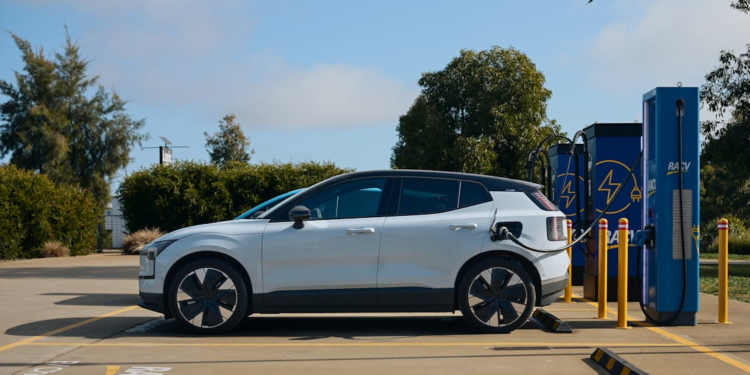As the world shifts toward a cleaner, greener future, the electric vehicle (EV) industry is experiencing a surge in growth. With more consumers and businesses adopting EVs, the demand for charging stations is skyrocketing. However, as cities and companies work to expand EV charging infrastructure, a crucial aspect is often overlooked: recyclability. The environmental impact of EV charging stations, particularly the cables and materials used, can undermine the sustainability efforts of the electric vehicle revolution.
In this article, we will explore how cities and businesses are incorporating recyclable materials into EV charging infrastructure, the benefits of using eco-friendly cables and components, and why recyclability is essential for the long-term sustainability of the EV ecosystem.
The Current State of EV Charging Infrastructure
The adoption of electric vehicles is accelerating. According to a report from the International Energy Agency (IEA), the number of electric cars on the road surpassed 10 million globally in 2020, and this figure continues to grow rapidly. Governments around the world are incentivizing the shift to EVs with various subsidies, tax rebates, and even stricter emission regulations. This has led to an increased demand for a widespread, accessible EV charging network.
In fact, by 2030, the global number of public EV charging stations is expected to exceed 4 million. However, with this rapid expansion comes a significant challenge: ensuring that the infrastructure is sustainable and doesn’t add to the growing concerns around e-waste and environmental degradation.
Most charging stations today rely on standard materials like copper for cables, plastics for insulation, and metal components for charging units. While effective for current needs, these materials aren’t always eco-friendly or recyclable. As the demand for EV charging grows, it’s essential that the materials used in these stations are designed with recyclability and sustainability in mind.
The Importance of Recyclability in EV Charging Infrastructure
Recyclability is a vital aspect of sustainable design, especially in infrastructure projects like EV charging stations. As cities and businesses expand their charging networks, they must consider the environmental impact of the materials they choose. The full life cycle of the charging cables and stations—from production to end-of-life disposal—should be considered to ensure that these products can be reused or recycled.
Here are some key reasons why recyclability is crucial:
- Reducing E-Waste
The rapid growth of the EV sector may contribute to an increase in electronic waste (e-waste) if materials used in charging stations and cables aren’t properly disposed of or recycled. E-waste, including discarded charging stations and cables, is a growing problem. “According to the Global E-Waste Monitor, more than 50 million metric tons of e-waste were generated globally in 2019, a figure that is projected to increase by 21% by 2030. Recyclable infrastructure helps minimize this problem by ensuring that materials are reused or repurposed instead of contributing to landfill waste,” says Gil Dodson, Owner of Corridor Recycling.
- Resource Conservation
Many of the materials used in current charging infrastructure—such as copper, aluminum, and rare-earth metals—are finite resources. Recycling these materials reduces the need for virgin material extraction, saving energy and lowering environmental impact. This is particularly important as the world faces resource shortages, especially of metals like cobalt and lithium, which are integral to both EVs and their charging infrastructure.
- Lowering Carbon Footprint
The production of raw materials for infrastructure components (including charging cables) can be energy-intensive, contributing to the carbon footprint of the project. By using recyclable materials or sustainable alternatives, cities and businesses can reduce the environmental impact of EV infrastructure. This aligns with the overall goal of decarbonizing the transportation sector and achieving net-zero emissions by 2050.
- Setting a Sustainable Precedent
Sustainability is more than just a buzzword in today’s world. Consumers, businesses, and governments are all becoming more conscious of their environmental impact. By incorporating recyclable materials into EV charging stations, cities and businesses can set a strong example for others to follow. This not only strengthens brand reputation but also attracts eco-conscious consumers who prioritize sustainability in their purchasing decisions.
How Are Cities and Businesses Adopting Recyclable EV Charging Materials?
The shift towards recyclable materials in EV charging infrastructure is already underway, with cities and businesses starting to invest in more sustainable solutions. Here are some innovative ways that the industry is incorporating recyclability into charging stations:
- Eco-Friendly Cables
Traditional EV charging cables are often made with plastics that are not easily recyclable. However, advancements in cable design have led to the creation of recyclable and biodegradable cables. “These cables use eco-friendly materials, such as thermoplastic elastomers (TPE), which offer the same durability and flexibility as conventional cables but can be recycled more easily. By using these materials, the overall environmental impact of charging stations can be significantly reduced,” says Maham Khan, Head of Marketing at EV Cables.
- Recyclable Charging Units
EV charging units, like the chargers themselves, are made up of various materials, including metals and plastics. Some companies are now designing charging stations with modular components that are easier to disassemble and recycle. For example, ChargePoint has introduced charging stations made with recyclable metal housings, and they are working on reducing the amount of non-recyclable plastic used in their designs.
- Sustainable Charging Stations
In addition to recyclable cables and units, the overall design of charging stations is being reimagined with sustainability in mind. Cities like London, San Francisco, and Amsterdam are investing in solar-powered charging stations made from recycled materials. These stations not only minimize the use of new materials but also integrate renewable energy sources, reducing their carbon footprint.
- Partnerships and Recycling Initiatives
Some companies are collaborating with recycling firms to create closed-loop systems for charging stations. For example, Tesla has partnered with recycling companies to recycle the components of their Supercharger stations, while Shell and BP are working with sustainability firms to ensure that their charging stations are recyclable and energy-efficient.
- Circular Economy Models
A growing number of cities and businesses are embracing circular economy models, which prioritize the reuse and recycling of materials. Instead of discarding old charging stations, parts are repurposed for new infrastructure projects. This ensures that valuable resources are kept in use for as long as possible, reducing waste and conserving resources.
The Road Ahead: Challenges and Opportunities
While the future of recyclable EV charging infrastructure looks promising, there are still challenges to overcome. One of the biggest obstacles is the cost associated with adopting new, eco-friendly materials. Recyclable cables, for example, can be more expensive to produce than traditional materials. However, as demand for these products increases and manufacturing processes become more efficient, the costs are expected to come down.
Another challenge is the need for better recycling systems. In many regions, the infrastructure for recycling e-waste, particularly charging cables, is not well-established. Governments, businesses, and consumers will need to invest in improved recycling programs to ensure that materials are properly processed and reused.
Despite these challenges, the opportunities are significant. As more businesses and cities adopt sustainable practices, the demand for recyclable materials in EV infrastructure will continue to rise, leading to innovations that benefit the environment, the economy, and consumers.
Conclusion
The future of EV charging infrastructure is not just about installing more charging stations; it’s about ensuring that those stations are part of a sustainable and circular ecosystem. By focusing on recyclable materials and sustainable design, cities and businesses can help reduce e-waste, conserve resources, and lower their carbon footprints. As the EV industry continues to grow, the integration of eco-friendly and recyclable charging stations will play a pivotal role in achieving a greener, more sustainable future for all.











































































